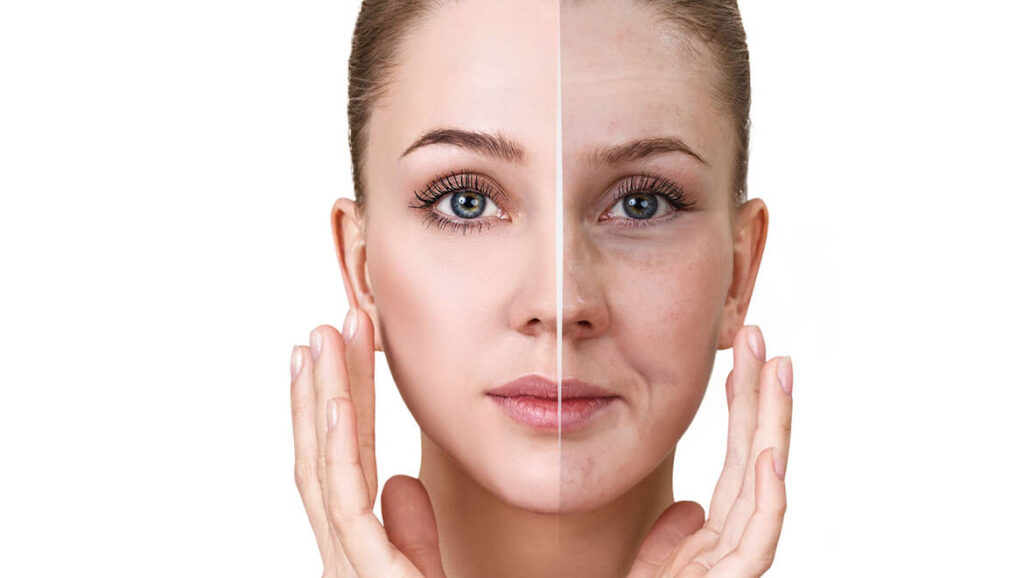Sallow skin, often described as a yellowish or pale complexion, is a common concern for many individuals. While it may not always indicate a serious health issue, understanding its causes, symptoms, and remedies is crucial for maintaining overall well-being and confidence.
Sallow skin refers to a complexion that lacks radiance and appears dull or jaundiced. It’s characterized by a yellowish or pale tone, often giving the impression of fatigue or illness. While sallow skin is not a medical condition itself, it can be a symptom of underlying health issues or lifestyle factors.
Causes of Sallow Skin
Several factors contribute to the development of sallow skin, including:
Lack of Proper Nutrition
A diet deficient in essential nutrients like vitamins and minerals can affect skin health, leading to a dull complexion and uneven tone.
Dehydration
Inadequate hydration can result in dry, dull skin, making sallowness more prominent.
Smoking and Alcohol Consumption
Tobacco use and excessive alcohol intake can impair blood circulation and oxygen delivery to the skin, contributing to a sallow appearance.
Exposure to Pollution and UV Rays
Environmental factors like pollution and prolonged sun exposure can damage the skin’s protective barrier, leading to discoloration and sallowness.
Genetics and Hereditary Factors
Some individuals may be predisposed to sallow skin due to genetic factors or family history.
Symptoms of Sallow Skin
Recognizing the symptoms of sallow skin can help identify underlying issues and prompt appropriate action. Common symptoms include:
Dull Complexion
Sallow skin often appears dull, lacking the healthy glow associated with vibrant skin.
Yellowish or Pale Skin Tone
A yellow or pale hue is characteristic of sallow skin, indicating a lack of vitality and vigor.
Fatigue and Tiredness
Sallow skin can be accompanied by feelings of fatigue and lethargy, affecting overall energy levels.
Dark Circles Under the Eyes
Dark circles or bags under the eyes are a common complaint among individuals with sallow skin, further contributing to a tired appearance.
Health Conditions Associated with Sallow Skin
While sallow skin can be a result of lifestyle factors, it may also signal underlying health conditions such as:
Anemia
Iron deficiency anemia can cause sallow skin due to decreased oxygen delivery to the tissues.
Liver Disorders
Liver dysfunction can impair the body’s ability to remove toxins, leading to skin discoloration and sallowness.
Thyroid Issues
Thyroid imbalances can affect metabolism and hormone levels, potentially influencing skin health and appearance.
Vitamin Deficiencies
Low levels of essential vitamins like vitamin C, vitamin D, and vitamin E can contribute to sallow skin and other skin-related issues.
Effects of Sallow Skin on Self-Esteem
Beyond its physical manifestations, sallow skin can have a significant impact on self-esteem and confidence levels. The psychological and social implications of sallow skin may include:
- Feelings of self-consciousness and inadequacy
- Avoidance of social interactions and activities
- Negative perceptions from others based on appearance
Addressing sallow skin is not only important for improving physical health but also for enhancing mental and emotional well-being.
Remedies for Sallow Skin
Fortunately, there are various remedies and treatments available to address sallow skin and restore a healthy complexion. These include:
Dietary Changes and Nutrition
Consuming a balanced diet rich in fruits, vegetables, lean proteins, and essential fatty acids can promote skin health and combat sallowness.
Hydration
Drinking an adequate amount of water daily helps maintain skin hydration and flush out toxins, reducing the appearance of sallow skin.
Skincare Routines and Products
Using skincare products containing ingredients like antioxidants, retinoids, and hyaluronic acid can rejuvenate the skin and improve its tone and texture.
Lifestyle Modifications
Quitting smoking, moderating alcohol consumption, and getting regular exercise can improve circulation and promote healthier skin.
Medical Treatments and Procedures
In cases where sallow skin is persistent or severe, medical treatments such as chemical peels, laser therapy, or injectable fillers may be recommended by a dermatologist.
Prevention Tips for Sallow Skin
Taking proactive measures to prevent sallow skin can help maintain a youthful and vibrant complexion. Some preventive strategies include:
Sun Protection
Using sunscreen daily and wearing protective clothing and accessories can shield the skin from harmful UV rays, preventing sun damage and premature aging.
Healthy Lifestyle Choices

Eating a nutritious diet, staying hydrated, getting enough sleep, and managing stress are essential for overall health and skin vitality.
Regular Skincare Routine
Establishing a consistent skincare routine tailored to your skin type and concerns can help keep sallow skin at bay and promote long-term skin health.
Routine Medical Check-ups
Regular visits to healthcare professionals for check-ups and screenings can detect underlying health issues early, allowing for timely intervention and treatment.
Conclusion
Understanding sallow skin is crucial for identifying potential health concerns and implementing effective remedies and preventive measures. By addressing the root causes and adopting healthy lifestyle habits, individuals can achieve a vibrant complexion and boost their confidence and well-being.
